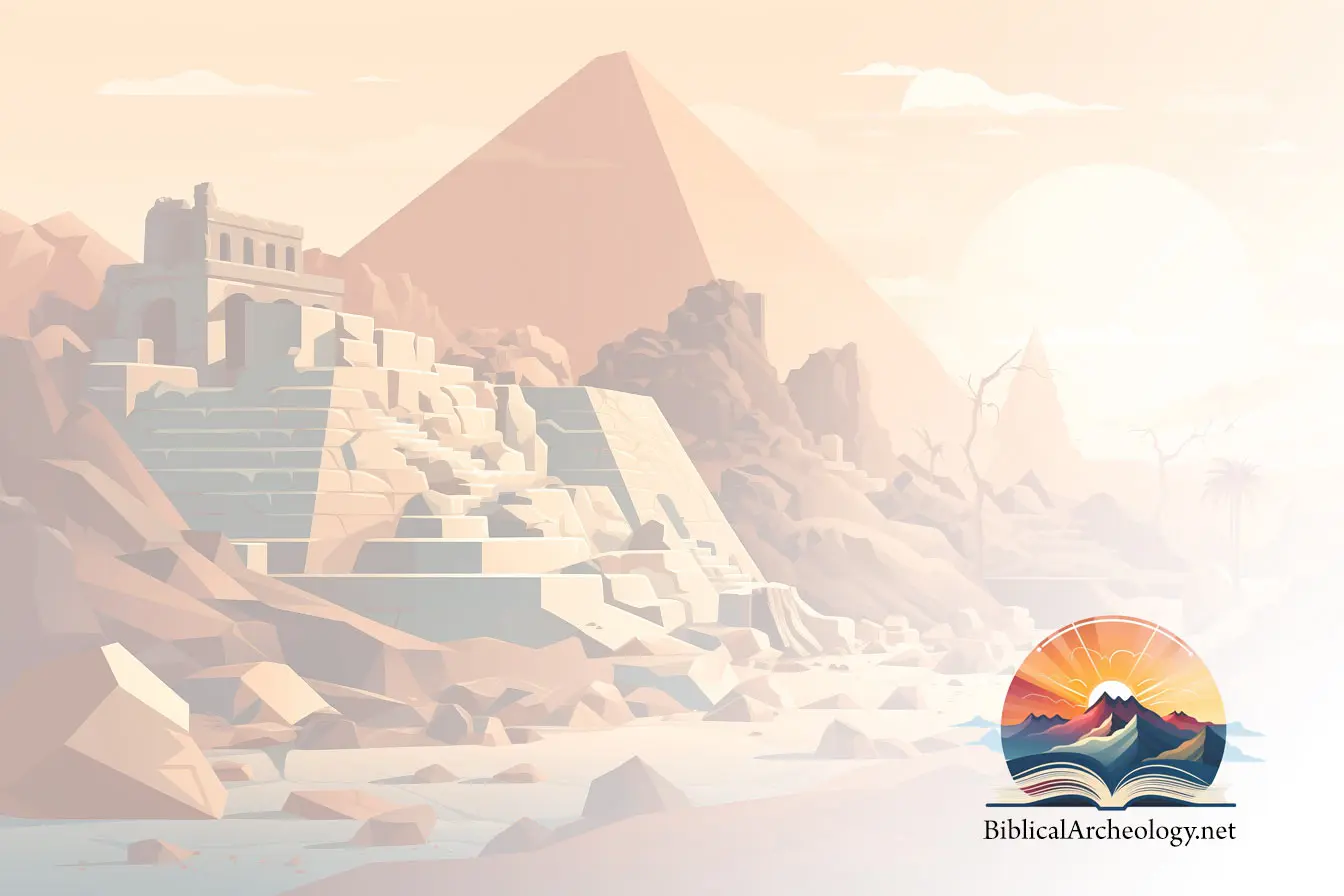These Articles Are Reproduced With Special Permission From Archeological Diggings Magazine
For More Information And A Subscription, Please Visit www.DiggingsOnline.Com
In the very first edition of this magazine, in April 1994, we printed the story of Doreen’s sad fate at Dor. In September 5, 2001, Professor Andrew Stewart, who has been in charge of the recent excavations at Dor, gave a lecture at Sydney University in which he told of the latest discoveries.
For the last 20 years digging has been done at Dor, a seaside city on the Mediterranean coast ten miles north of Caesarea. Dor is about the only natural harbour on the eastern Mediterranean coast and even so does not do too much to protect shipping. It has a half moon dent in the coast line and a slender island across the entrance which shields the inner water from violent storms, but the entrance is so precarious that many ships sank either in the harbour or as they entered.
It often seems to happen that some spectacular find is made by archaeologists just before the end of the dig and Dor was no exception. The day before the 1992 dig ended the team found Doreen. Of course nobody knew her real name but as she was found at Dor, Doreen seemed to be appropriate. It was 7 am on Thursday, August 13. The team was tidying up the excavations in preparation for leaving next day so that they could look forward to a peaceful Sabbath on Saturday. It was not to be. Some team members were removing the rubble from beside a high limestone wall when they unearthed the bony toes of a human foot.
They immediately realized that this could be no rush job. If it was a complete skeleton it would have to be carefully exposed bone by bone, recorded and removed before they could leave the dig. They worked on Doreen non-stop for the next 11 hours. Doreen was tall and slim, and about 30 years of age. Deep pitting in her pubic bones showed that she had given birth to at least two children. Scattered nearby were pieces of fine painted pottery, a storage jar and a stag antler. The evidence showed that she had suffered a violent death.
Her skeleton was contorted and her skull was smashed. Beneath her were some jagged pieces of broken pottery, some stone tools and animal bones, some of which were protruding into the body. The team concluded that an earthquake had suddenly toppled a heavy stone wall beside which she had been standing and Doreen met her end by being crushed beneath the falling wall.
One stone had dislocated her right leg and cracked her ankle, twisting her foot back under her as she fell. Other rocks from the wall rained down breaking her ribs and dislocating her neck. Frantically she raised her hands to protect her face but this action only succeeded in hammering her right middle finger through her nose. Fortunately for Doreen, it was all over in a moment. Not until 3,000 years later would her cruel fate be known.
1 Kings 4:11 says that the governor of Dor was married to Taphath, one of Solomon’s daughters, so Dor must have been under Israelite jurisdiction at the time of Solomon. The pottery that was found above the destruction layer at Dor included Cypriot bichrome ware, that is pottery painted with two different colours. Such pottery is scarce even in Cyprus itself. It suggests that there could have been a trading relationship between the Phoenicians in Dor and their compatriots on Cyprus.
Professor Stewart stated that there was a thriving industry processing Murex shells at Dor. These are a type of sea snail from which the royal purple dye was extracted. It brought a high price on the market and was in great demand, but the learned professor took a dim view of it all. It seems that the industry was carried on in pits which produced a foul stench which did not make excavating in the vicinity very pleasant.
The outstanding discovery made in the recent excavations was of items from the Greek period. Dor has been occupied from the Bronze Age right down to the Christian era, but previously there had been scant evidence of occupation during the Greek period. That was rather strange because Dor was a shipping centre and the Greeks were great sailors. It was unthinkable that there should be no evidence of activity during the Greek period, but now the evidence has come to light and the archaeologists are ecstatic.
Not only have they found this evidence but it is of quite a spectacular nature. In particular there is a mosaic of a comic mask used in Greek plays. The Greeks were big on theatrical performances. After all, Drama is a Greek city which gave its name to the idea of performing dramas. But what made this mosaic so impressive was that one third of it was made up of glass tesserae (the small cubes from which mosaics are made) which literally glistened.
Actually some of the slides which the professor showed had only just reached him and he said that he was actually seeing them for the first time himself. He was quite pleased at the sight and the audience was also duly impressed, though there was the usual mix up of slides on the computer which delayed the lecture for a while. Also from the Greek period they found some catapult stones and typical oil lamps.
The excavations have shown Dor to have been an extremely important city, much larger than previously thought. It is now known to have been at least 70 acres in area and probably boasted a population of some 15,000 residents. Apparently because King Herod would not hand over control of Caesarea to the king of Dor, he had gone a ahead and built his own city and harbour. The occupation of Dor apparently came to its end after the Roman period. Perhaps a plague wiped out the inhabitants and brought its prosperity to an abrupt end.
December 2001 – January 2002


